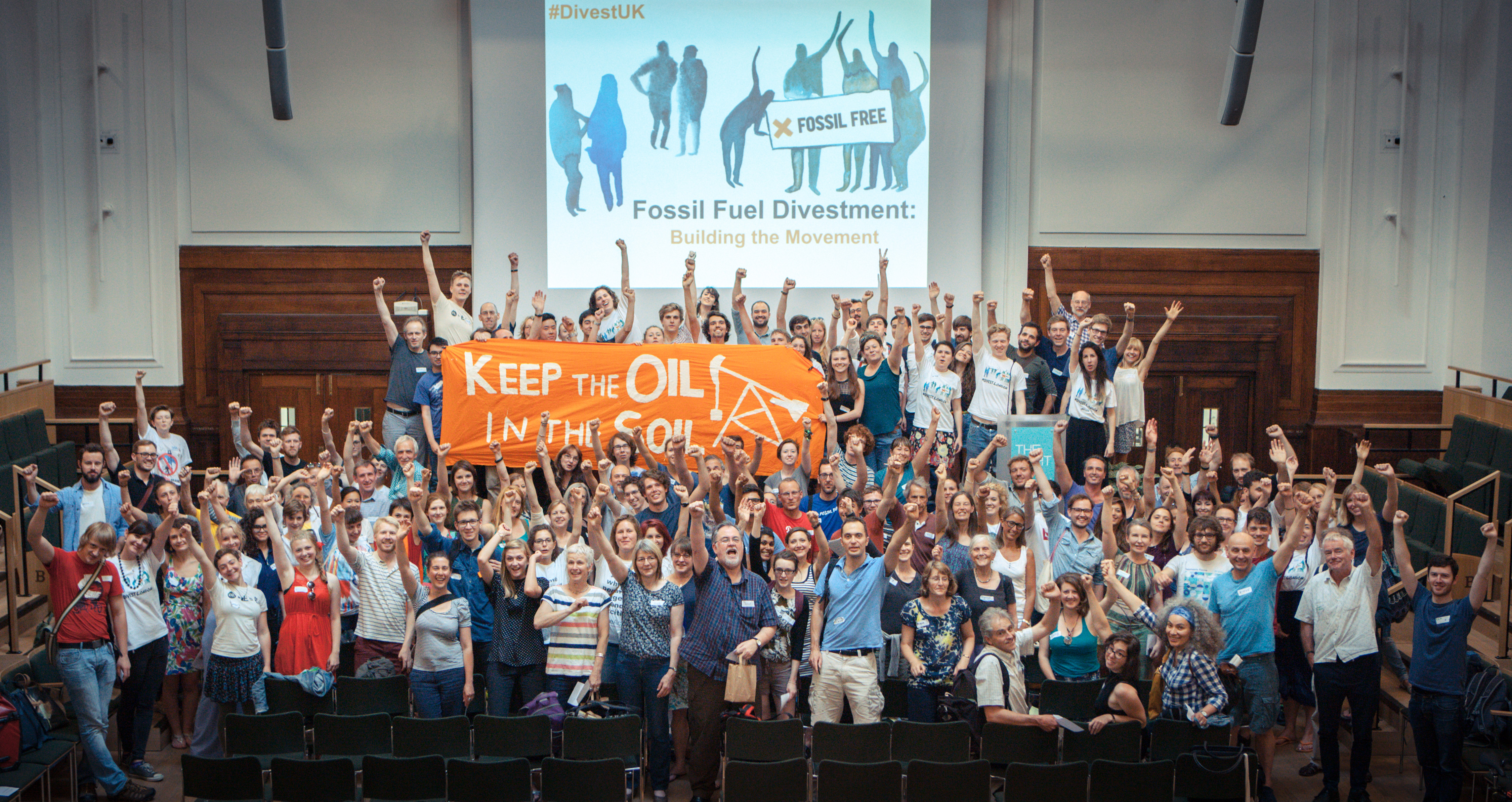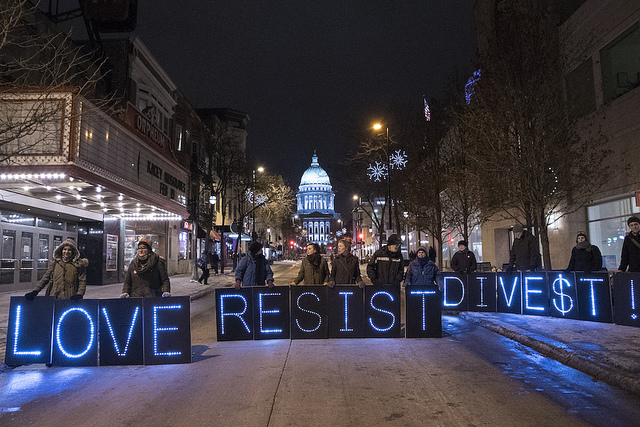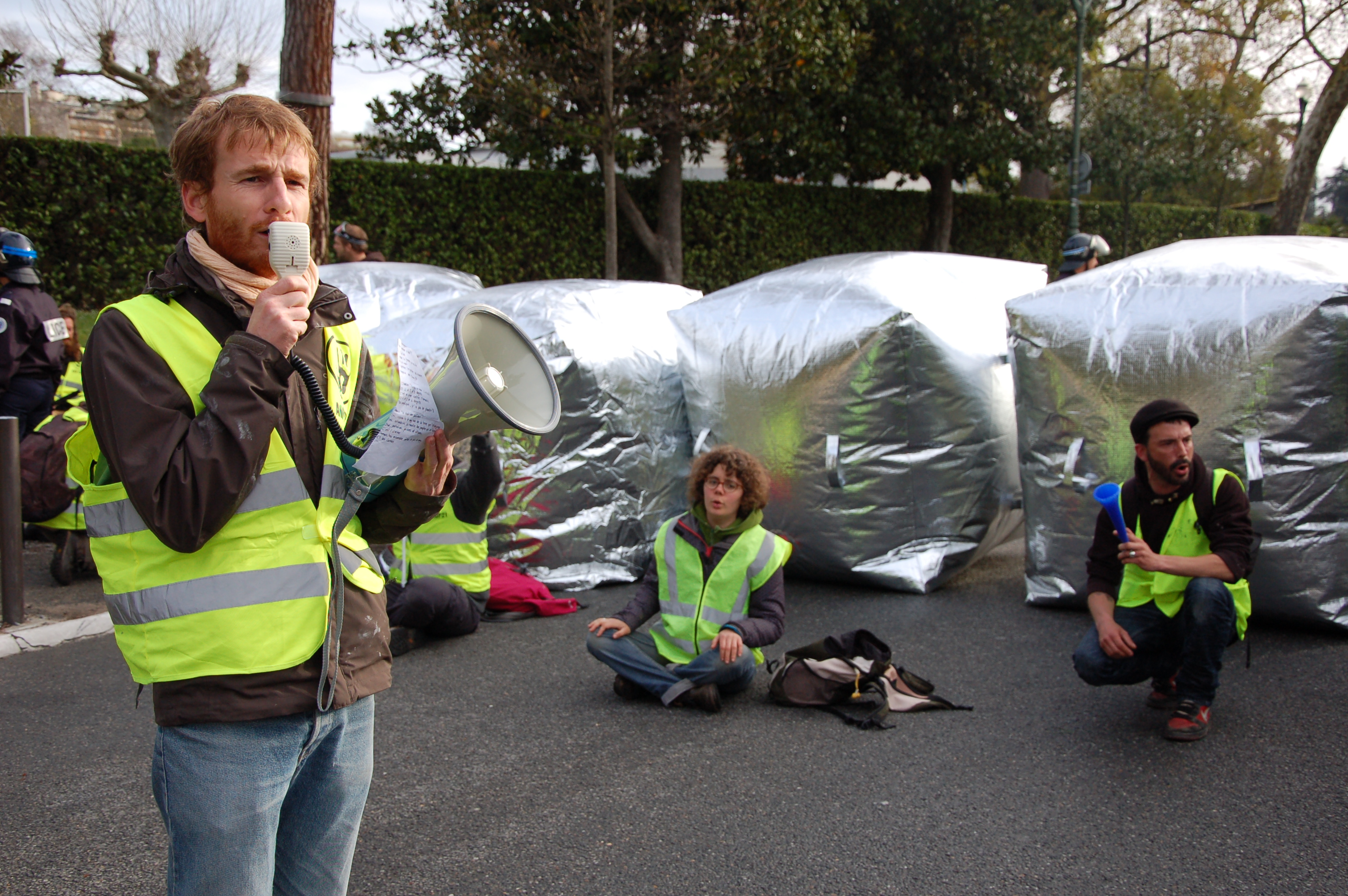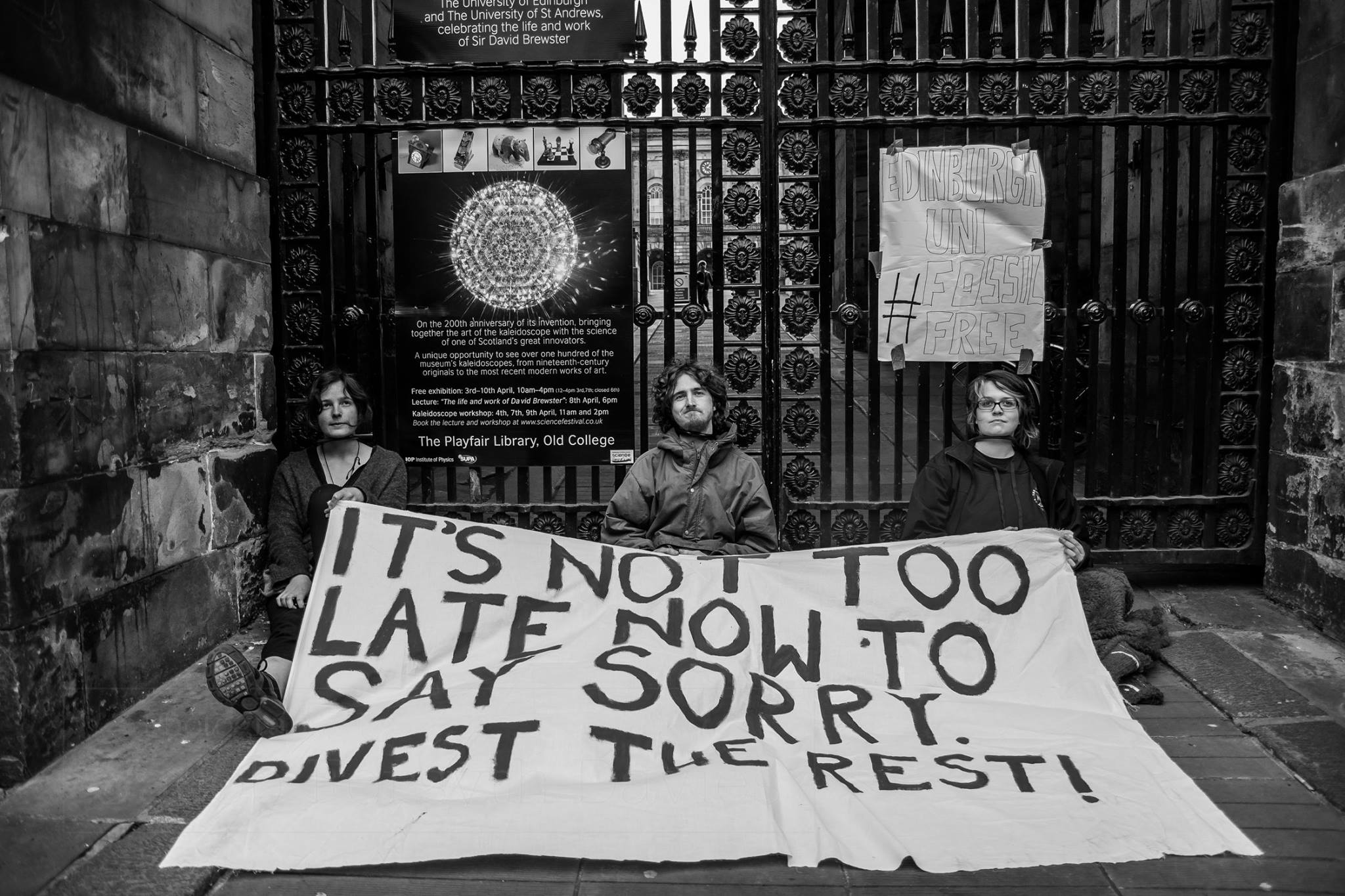Fossil Free Europe
Escalation Guide
How to shift your campaign up a gear
(or several) and win
You’re running a divestment campaign. You’ve picked your target and built a team, started a petition to build public support and planned your campaign, and you’ve been campaigning for a while. You’ve reached out to decision makers in your institution, but they just won’t move.
Maybe your target won’t speak to you at all, or perhaps they’re just not taking your campaign seriously. Sounds like it’s time to escalate.
Why escalate?
- Increase pressure on targets where other tactics have failed
- Keep the campaign fun and exciting for supporters and team members
- Demonstrate your power and your refusal to back down
We can’t win just by persuading institutions to divest
Globally we’ve already won 700+ divestment commitments, worth over $5tn! But this is just a step towards our bigger aim – building a powerful movement to destroy the social acceptance of the fossil fuel industry and tackle climate change. We need to build mass public support and get lots of people confident to take action to build the growing public battle we need to win on the climate.
Define your own success
- Make sure your action logic is one you can win – don’t say you’re going to shut down a meeting unless you think you can.
- Define your action’s intended success by how much it builds your capacity to escalate further. Will it win you more members, superior resources, or enhanced legitimacy?
It’s time to turn up the heat
Escalation takes place throughout a successful campaign and can be anything from a petition delivery to an occupation. Your group should be constantly finding escalation points and ways to build power as your campaign moves forwards.
Find out: how to build your base, attract attention & build awareness, low level confrontation, take direct action and take a look at this handy action planning checklist
1. Building your base

Divestment campaigners
- Run stalls at fairs, festivals and other local events to get contact details on your Fossil Free petition, talk to people, and tell them about your campaign.
- Host your own events to bring people in. Think about talks with interesting speakers, film screenings, music nights. Use your skills and contacts to attract people and use the platform to explain more about, and invite people to join, your group.
- Use your own networks to build support and promote your events.
The more people involved with your campaign and actively supporting it, the more you are already winning! The best way to get people involved is to plan a journey to take them on – not one event but a series, with plans to promote each one and then use it as a platform to attract more people to the next.
2. Stunts – attracting attention & building awareness

- You could deliver your petition in a creative way, organise a banner drop, give a mock award to your target institution, stage a performance, or do some spoof advertising.
- Banner making or creative workshops preparing for an action are great ways for the group to get to know each other.
- Get creative, use your skillset, think about audience, and how people will see your event (media? Social media? While it’s happening?). You can find more action ideas here.
3. Low level confrontation

Local campaigners growing their power opposing gas extraction in Groningen, Netherlands
When you’ve engaged people, got them to meetings and built up momentum, you can think a little bigger.
- You might be able to organise a rally, march, parade or a vigil.
- Thinking more creatively, you could stage a die in, a silent protest, or ‘haunt’ your targets by following them around.
- Make a ‘Yes Men’ type announcement your target is divesting for all the reasons you say they should, by pretending to be them!
- Boycotts, strikes or walkouts can be powerful.
Think about symbolic acts, like turning your back, or by turning down awards or honours from your target institution. - You could get someone high profile, with a connection to your target, to withdraw their cooperation, like an artist removing their work from a gallery, a business moving their account from a bank, or a famous person returning or turning down their honorary degree.
4. Taking direct action

#STOPMCEDD France April 2016
Make space for rejuvenation when you’re engaged in escalation
It is wise to take a step back if we are feeling exhausted, rest and come back when we feel rejuvenated. You can find some excellent guidance on how to stay active for the long haul at http://www.findingsteadyground.com/.
Only move into this space if you’ve had some training in non-violent direct action, you’ve planned well and thought through the risks, and you feel comfortable going ahead.
The risks are high but the benefits are also great – at their best, confrontational actions can shift power and lead to big wins.
The objective of direct action to confront your target is to disrupt things as much as possible. You’re aiming to make your protest impossible to ignore.
- You could occupy a key building or area; stage a stand in or sit in.
- You could build a barricade or stage a lock on, blockading a building to stop staff accessing it or preventing an event from going ahead.
- If you’re up for personal sacrifice, some or one of you could stage a hunger strike.
- The Ruckus Society has some great resources and ideas for actions, and the tactic star in their action strategy guide is useful.
- It’s important to know your legal rights. If you’re in Deutschland we’ve made a legal guide for you; in the UK check out the resources of Green and Black Cross. We will continue to update this section with more guides for different countries.
If you need staff support you can find all the European staff contact details here
Action planning checklist
1. What is the action? How confrontational is it?
2. Why are you doing this? Be clear about your target, audience, and how this fits with your strategy. How will it help build power and momentum, bringing more people into your next action?
3. Where and when are you holding the action? Where will you meet on the day?
4. What resources do you need? Who is responsible for sorting these?
5. What are the safety and legal implications of this action. Assess the risks and decide how to deal with them. Do you need someone to liaise with police / security? Or a legal observer?
6. How will you document the event? Who will take pictures?
7. What media are you inviting? What’s your key message? Is there a social media plan?
8. How will you engage the public, passers by, or staff of any building you’re picketing? Would a leaflet be useful to explain what you’re doing?
9. What could go wrong? Do you have a contingency plan?
10. How will you debrief afterwards?



